o acorde E-o bete noire de todos os jogadores ukulele. A tentar enfiar todos os dedos num espaço minúsculo na prancha. Impossivel. Então aqui estão dez maneiras possíveis de tocar o acorde E. Experimente-os e veja se você gosta de algum deles (eu não).
1) The Way the Books Tell You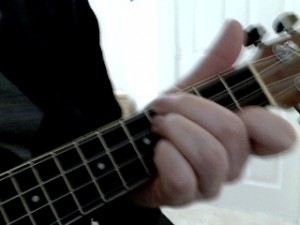
Index finger – A string 2nd fret
Middle finger – G string 4th fret
Ring finger – C string 4th fret
Little finger – E string 4th fret
desvantagens: a lot of fingers to FITT into a small space.,
2) The Double Up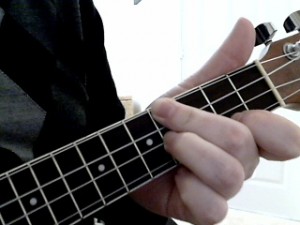
Index finger – A string 2nd fret
Middle finger – G And C strings 4th fret
Ring finger – E string 4th fret
desvantagens: Takes some practice to get the hang of.
3) The Treble Up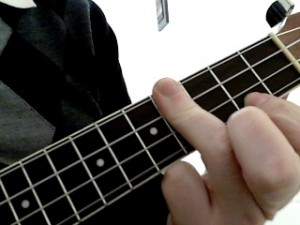
Index finger – A string 2nd fret
Ring finger – G, C and e strings 4th fret
desvantagens: você precisa ter seu dedo anelar deixar as strings em um ângulo difícil para que você ainda possa ouvir a string A.,
4) The G-String Block
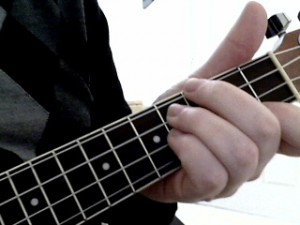
Index finger – A string 2nd fret
Middle finger – Muting the G string (stopping it from sounding by resting against it rather than fretting it)
Ring finger – C string 4th fret
Little finger – E string 4th fret
ou with your thumb.

5) the Treble Up And Block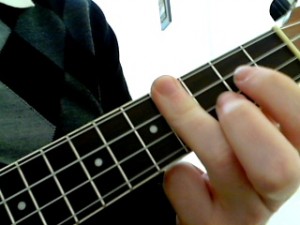
Ring finger – G, C and E strings 4th fret
A string muted with any finger (including the underside of the ring finger).,
Se parar a corda A a tocar no triplo-up, ainda terá e o acorde como a corda G lhe está a dar a mesma nota. Você pode usar dedos individuais, juntamente com um mudo para fazer este acorde.
6) The Fourth Fret Lay-Across
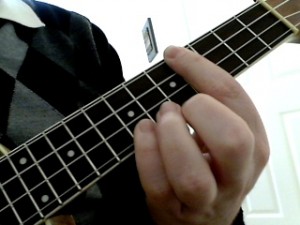
Index finger – Barre across all strings at the 4th fret.little finger-a string 7th fret.como um acorde C subiu quatro trastes. É uma das minhas formas preferidas de jogar.
desvantagens: o barre tem alguma prática. Pode ser um grande salto de e para acordes abertos.,
7) the Blocked E7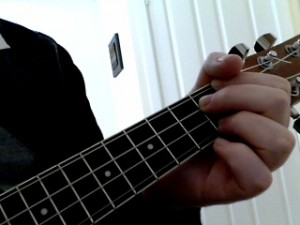
Index finger: G string 1st fret
Middle finger: Muting C string
Ring: A string 2nd fret
E string open
Like an E7 chord with the middle finger muting the C string rather than fretting it. Ou pode usar a parte de baixo do dedo indicador para silenciar a corda.
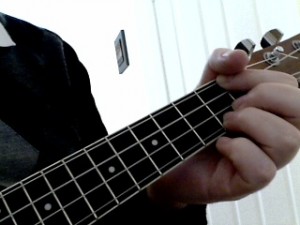
desvantagens: soa um pouco desagradável porque você tem um grande ‘Tunk’ no meio do acorde.,
8) E5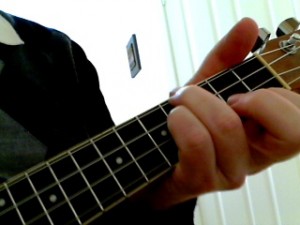
Index finger – A string 2nd fret
Ring finger – G string 4th fret
Little finger – C string 4th fret
E string open
desvantagens: nenhuma terceira nota maior por isso não é um acorde principal. Em algumas músicas isso não importa.
9) Up the Neck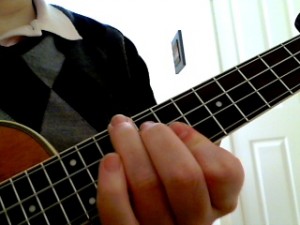
Index finger: E and a strings 7th fret
Middle finger: C string 8th fret
Ring finger: G string 9th fret
The Bb chord shape moved up the neck.
desvantagens: um longo caminho a percorrer se estiver a tocar acordes abertos.,
10) Polegar Lay-Todo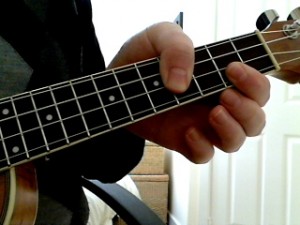
o dedo indicador – Uma seqüência de caracteres 2º traste
Polegar – G, C e e cadeias 4º traste
Desvantagens: Torna a mudança de acordes difícil. Quase sempre parece horrível.
